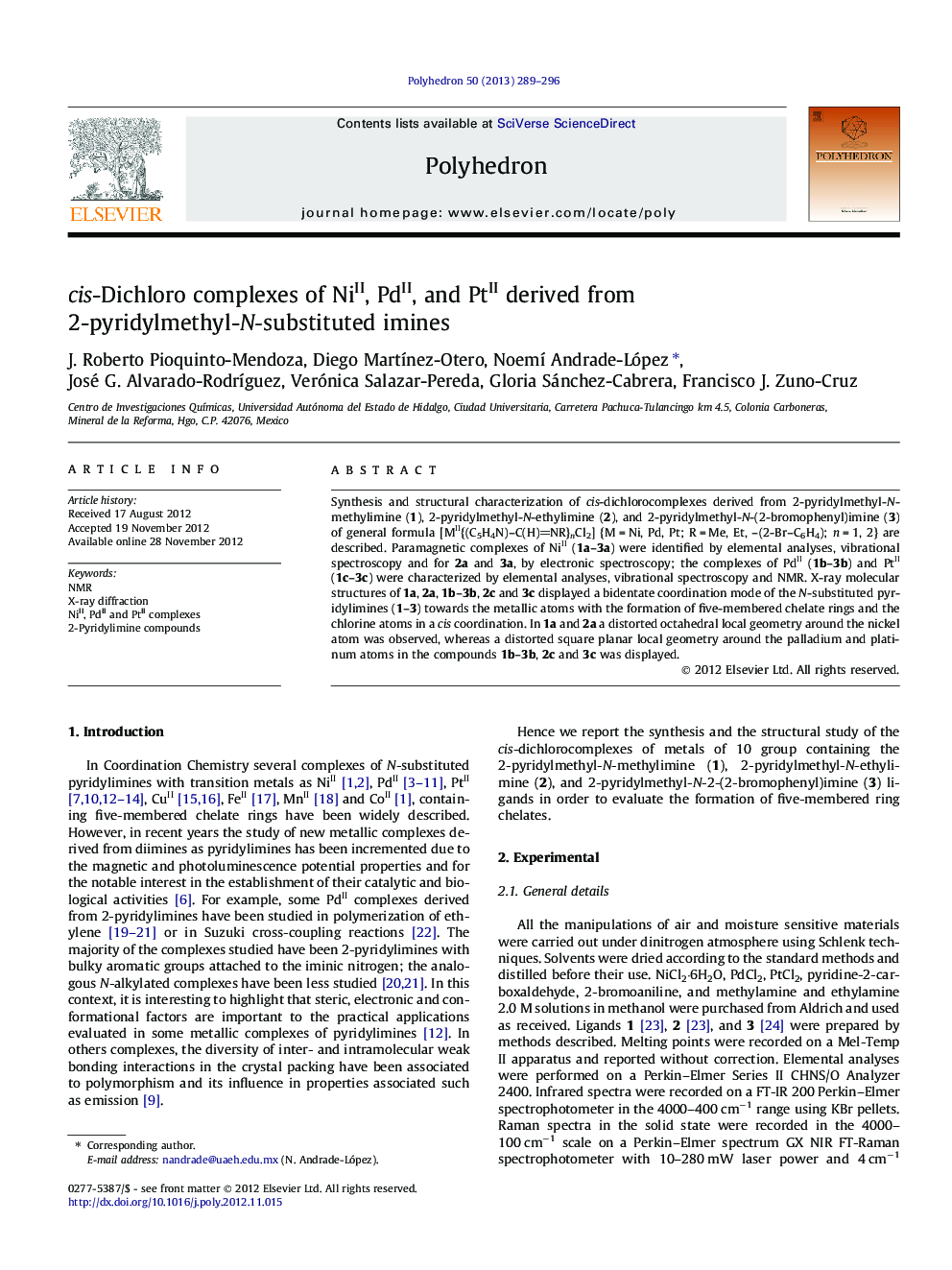| Article ID | Journal | Published Year | Pages | File Type |
|---|---|---|---|---|
| 1334650 | Polyhedron | 2013 | 8 Pages |
Synthesis and structural characterization of cis-dichlorocomplexes derived from 2-pyridylmethyl-N-methylimine (1), 2-pyridylmethyl-N-ethylimine (2), and 2-pyridylmethyl-N-(2-bromophenyl)imine (3) of general formula [MII{(C5H4N)–C(H)NR}nCl2] {M = Ni, Pd, Pt; R = Me, Et, –(2-Br–C6H4); n = 1, 2} are described. Paramagnetic complexes of NiII (1a–3a) were identified by elemental analyses, vibrational spectroscopy and for 2a and 3a, by electronic spectroscopy; the complexes of PdII (1b–3b) and PtII (1c–3c) were characterized by elemental analyses, vibrational spectroscopy and NMR. X-ray molecular structures of 1a, 2a, 1b–3b, 2c and 3c displayed a bidentate coordination mode of the N-substituted pyridylimines (1–3) towards the metallic atoms with the formation of five-membered chelate rings and the chlorine atoms in a cis coordination. In 1a and 2a a distorted octahedral local geometry around the nickel atom was observed, whereas a distorted square planar local geometry around the palladium and platinum atoms in the compounds 1b–3b, 2c and 3c was displayed.
Graphical abstractThe synthesis and structural characterization of mono- and bis-chelate complexes of Ni, Pd, and Pt of general formula [MII{(C5H4N)–C(H)NR}nCl2] is described. Molecular structures by X-ray diffraction studies showed a bidentate coordination mode of the iminic ligands toward the metal atoms. The Pd and Pt complexes exhibit M⋯M dimeric intermolecular interactions in a head–tail fashion.Figure optionsDownload full-size imageDownload as PowerPoint slide
